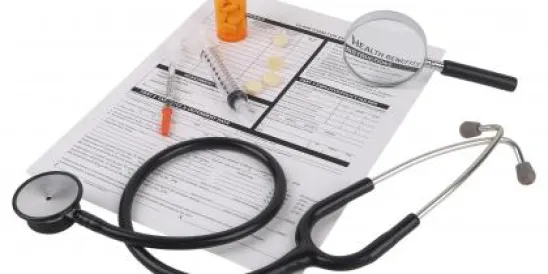High-deductible health plans (HDHPs) are among the fastest growing health plans in both the individual and group markets. For calendar year 2017, the IRS defines an HDHP as any health plan with a minimum deductible of $1300 for individuals and $2600 for families. Notwithstanding these high deductible amounts, the IRS requires that HDHPs typically cover generic drugs, primary care visits, and other preventative services without regard to whether an enrollee has satisfied his or her deductible. In other words, preventative care services must be fully covered as of a HDHP’s effective date; non-preventative care services are only covered after the enrollee has met his or her HDHP deductible. Finally, given the significant deductible requirements under a HDHP, Health Savings Account (HSAs) have become a popular companion to HDHPs as a way for employees to use tax-free funds (which usually include some amount of employer contributions) when paying for out-of-pocket medical expenditures.
Who benefits from HDHPs? An HDHP’s lower monthly premiums and greater consumer control makes HDHP’s particularly attractive to healthy consumers who can reasonably anticipate a limited need for non-preventative medical services over the course of a plan year. On the other hand, persons suffering from chronic diseases may want to avoid (or reconsider) enrolling in a HDHP. Since essential care management services are not covered until the high HDHP deductible is met, patients with chronic conditions will likely experience significantly greater out-of-pocket medical expenses than he or she would in a traditional health plan with a significantly lower deductible. In fact, recent research suggests that enrollees in high-deductible plans pay on average 1.5 times more in out-of-pocket costs than enrollees in traditional plans.
High-Deductible Plans and Demand-Side Cost Control
HDHPs have grown in popularity since Congress established HSAs to compliment HDHPs under the Medicare Prescription Drug, Improvement, and Modernization Act of 2003 (MMA). At the time of the MMA’s enactment, lawmakers hoped that a HSA, along with a HDHP’s limited non-preventative service coverage, would reduce overall medical expenditures within the healthcare system – e.g., HDHP enrollees would be incentivized to use covered preventative services and, in turn, lower the need for more expensive non-preventive care due to the high deductible associated with such care.
According to the Kaiser Family Foundation, 29% of workers with employer-sponsored coverage are enrolled in some form of an HDHP and HSA, up from 17% in 2011. Typically responsible for paying 74% to 85% of employee premiums, employers are increasingly offering HDHPs and HSAs because monthly premiums are low and out-of-pocket costs are shifted over to the employee. Meanwhile, tax-free HSA dollars result in lower out-of-pocket expenses at the point of service.
Employers can also take advantage of covered preventive care benefits by requiring that employees designate a primary care physician or receive essential screenings to be eligible for contributions.
Decreased Utilization, Increased Out-of-Pocket Costs?
Notwithstanding the hope that HDHPs and HSAs would lower overall medical expenditures within the healthcare system (See, above), a recent study by the Health Care Cost Institute revealed that enrollees in HDHPs were responsible for 24% of their medical costs between 2010 and 2014, compared to 14% in traditional plans. Further, while enrollees in traditional plans made over twice as many doctor visits as HDHP/HSA enrollees for non-preventive care, the study found that enrollees in high-deductible plans spent an average of $1030 in annual out-of-pocket costs, whereas enrollees in traditional plans spent an average of $687.
Higher Cost-Sharing Disproportionately Reduce Access for Low-Income Workers
According to a recent analysis by the Employee Benefit Research Institute, workers enrolled in HDHPs and HSAs who made $50,000 or less visited the doctor less than half as many times as workers who made $100,000 or more.
Lower-income employees generally enroll in HDHPs and HSAs to take advantage of the lower monthly premiums. While these employees are less likely to seek non-preventive services than higher-income workers, they are also less likely to utilize the preventative services (e.g. flu shots, mammograms) that, as noted above, are covered from a HDHP’s effective date. Critics of the plans suggest that enrollees may have difficulty identifying which services are covered under complicated HDHP/HSA benefit designs. Further, lower-income individuals may delay or avoid preventative care screenings because physicians might perform additional services or provide referrals that are not covered.
The analysis also revealed that lower-income HDHP/HSA enrollment was associated with an increase in emergency department visits and inpatient hospital admissions, indicating that primary care remains inaccessible for lower-income workers.
Lawmakers Pushing for Reform Introduce New Rule in Congress
In July 2016, a bipartisan bill was introduced in Congress that would expand HDHP and HSA benefits to cover chronic disease care (e.g. exams, prescriptions drugs) before enrollees fulfilled their HDHP deductible requirements. The legislation was introduced in response to growing concerns that high-deductible plans limit access to necessary treatments and financially burden those with chronic diseases, a patient population that now constitutes almost half of all U.S. adults.
Supporters from both sides of the aisles are optimistic that the bill will become law. However, critics argue that even if the legislation is passed, coverage for chronic conditions will inevitably contribute to premium spikes. Additionally, insurance companies have few incentives to design plans for those with chronic conditions who require regular care.
For now, high-deductible plans that provide limited coverage are the most common option in the Affordable Care Act’s individual and small-group markets. As open enrollment for 2017 health coverage beings November 1st, consumers should seriously consider the plan’s advantages and limitations before enrolling in an HDHP.



 />i
/>i
